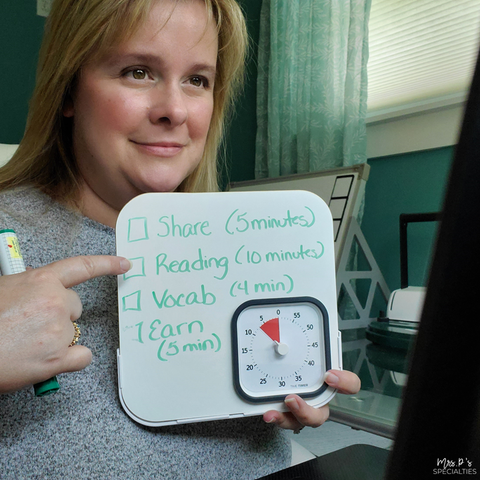Research tells us that adding choices, visuals and hands on activities are beneficial for students diagnosed with ADHD, but what does that look like in our classrooms? Here are 4 tips for applying research and supporting students with ADHD.
ADD IN CHOICES
When students are able to make choices about their learning, they feel valued and invested. Giving choices doesn’t have to be disruptive to your classroom. These examples allow the student to feel in control without being disruptive:
- Would you like to write the sentences on the computer, paper or whiteboard?
- Do you want to work at your desk, standing by the table or on a beanbag chair?
- Would you like to listen to music while you work?
None of these choices will create havoc, but they all will incorporate the movement and input our students sometimes crave.
VISUALS
Use visuals to support sequencing, initiation and following directions. Visuals could be pictures, clip art, photos, text or a combination of all types. One of my most favorite things about visuals is how they are able to be faded.
It's important to remember that we need to have a plan for fading any prompts we add in. Without fading, the student will need help lifelong. Read the blog posts below to help create plans for fading supports and helping our students to be more independent.
ORGANIZE MATERIALS
Students diagnosed with ADHD often struggle with organization, so this is an area students may need specific teaching and help. This is a great time to add in choices and talk about what is or isn’t helpful. Here are some ideas for systems for organization:
- Color coded by activity or class
- Use an expandable folder divided by class or activity
- Have a small tote bag for each class or subject
- Teach students to use a drawer system where each drawer is a different class or subject
If your student is somewhat able to remain organized independently, a binder system with dividers may also be an option.
ORGANIZE TIME
Initiation and sustained attention and participation can be an area of struggle. Adding in supports such as a visual schedule, visual timers or checklists can help. Click the links below to read more about classroom organization strategies.

As you begin to think about and plan for supporting your students with ADHD, remember that most of these ideas and supports are helpful for all students. Teaching your whole class about these strategies and tools can develop lifelong skills for your entire class.

About the Author
Pam Petralia has been a special education teacher for over 20 years and has worked in a variety of settings (self-contained, resource, k-2, middle school, etc.) She is the owner and creator of Mrs. P's Specialties which helps teachers easily implement and apply research based practices through tips & ideas, resources and consulting into their classrooms.
Links to follow:
Blog: www.mrspspecialties.com
Instagram: @mrspspecialties
FaceBook: https://www.facebook.com/mrspspecialties

